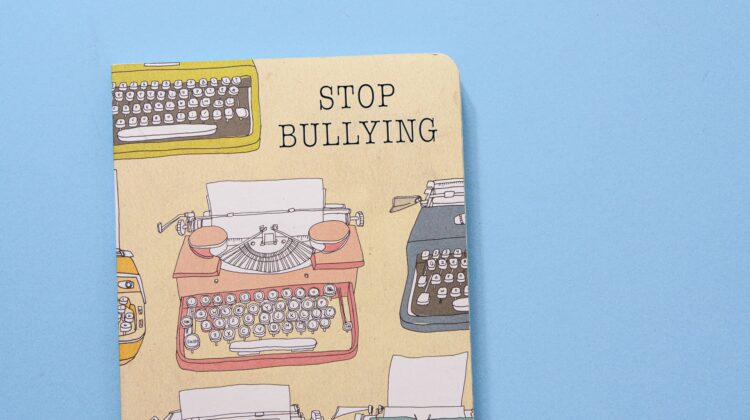
With so much attention given to bullying in the news today, most parents know it’s a problem. Because of this, many will try to protect their kids and have conversations around the issue. The problem is that bullying is complex — often much more than adults remember or realize. Because of this, even the most attentive parents may be surprised to learn there are aspects of bullying that don’t match up with their preconceptions.
What Is Bullying?

The term “bullying” encompasses a variety of harassing behaviors, including intimidation, assault, physical or verbal confrontation, nasty teasing, vandalism, extortion, and exclusion. Bullying is intentional and harmful, and it demands intervention.
Surprising Facts About Bullying
To demonstrate the complexity surrounding peer harassment — especially in childhood — here are some facts that may surprise you about bullying:
1. Most bullying happens at school. While many parents fear bus rides or interaction among students in social environments, the reality is that most bullying happens at school.
2. Bullying takes place in all kinds of communities. Although cities may receive more attention for bullying, it’s just as common for bullying to occur in rural areas. Likewise, the size of the school or its socioeconomic status has nothing to do with whether there are bullies; in fact, peer harassment can happen anywhere.
3. Grades 5-8 are the peak bullying years. Think high school is the biggest breeding ground for bullies? Think younger. Statistics show that bullying begins to accelerate after third grade and hits its peak in the fifth through eighth grades. Typically, harassment decelerates after tenth grade. Likewise, as kids get older, physical aggression lessens.
4. Boys tend to be more direct, and girls, indirect. While boys make the most direct attacks, girls tend to rely on subtler social aggression through behaviors such as slandering, social exclusion, manipulation, and gossiping.
5. Bullies may not have low self-esteem. Despite what many people think, bullies tend to be highly confident. They typically lack empathy and enjoy hurting others. Their bullying behavior will often earn them prestige and power among their peers.
6. Kids don’t share everything with their parents. Even if you have an open, close relationship with your kids, don’t assume they are telling you every detail of what’s happening with a bully. To build trust, try to stay calm and don’t overreact to what your child chooses to share.
How to Help Your Children

What can you do as a parent to help your kids? When it comes to bullying, here is a look at how to handle your child’s situation.
If He or She Is a Victim
Research shows that somewhere between 75% and 90% of students experience harassment from their peers at one time or another. If your child is showing the following warning signs, it could be a sign of bullying:
- Never bringing friends home,
- Never being invited to parties,
- Not wanting to go to school,
- Experiencing restless sleep,
- Lacking interest in schoolwork,
- Or stealing money from family members.
What to do
Listen to, believe, and talk with your child. Validate that what is happening is not OK. If there’s a way to proactively remove your child from the situation (such as sitting in a different place at lunch), look for it. Provide advice on how to be assertive in the situation, deflect teasing, avoid giving the bully the satisfaction of crying and leave the place with dignity. You can also take steps to help your child find other friends, try new activities or learn self-defense. If these strategies prove to be insufficient, talk to school personnel.
If He or She Is a Bully
Anyone can be a bully. If you notice that your child tends to tease weaker children; be hot-tempered; show anti-social behavior, such as disrespect for adults; or act impulsively, it could be a sign of bullying tendencies. Should you discover that your child is behaving like a bully, you need to take action.
What to do
During such situations, it is best to stay calm, speak with empathy but let your child know that his or her behavior is unacceptable. Try to determine if there is a reason for this behavior. Find more positive outlets for your child’s wants and needs. Also, consider outside help.
If He or She Is a Bystander
It is seen that many children who aren’t directly affected by a bullying situation are still involved simply by being observers to the issue. Many times, these bystanders can reap harmful consequences, such as feeling more vulnerable, experiencing desensitization, decreasing empathy, and more. Typically, bystanders are afraid to say anything, or they are confused about what to do. Teaching your child to care about others and do what is right can empower the positive behavior you hope to see.
What to do
Listen calmly and empathetically, modeling the kind of caring response you want to teach your child. Talk about speaking up for the vulnerable. Discuss ways to do something, which could be as simple as not spreading a rumor or as courageous as standing up against a bully.
Bullying is a serious issue — one that parents must proactively handle. One of the best ways you can help your child navigate the world of school, peers, and bullying is by equipping yourself with knowledge. The information in this article is a great place to start.
It is an important issue that needs to be addressed. Please leave your valuable thoughts in the comments!
Leave a Reply